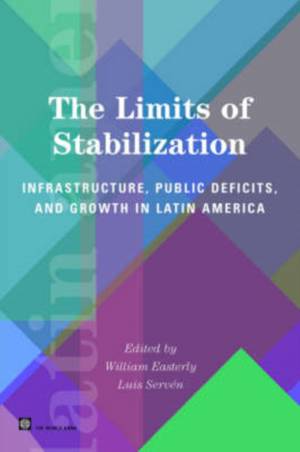
- Afhalen na 1 uur in een winkel met voorraad
- Gratis thuislevering in België vanaf € 30
- Ruim aanbod met 7 miljoen producten
- Afhalen na 1 uur in een winkel met voorraad
- Gratis thuislevering in België vanaf € 30
- Ruim aanbod met 7 miljoen producten
Zoeken
The Limits of Stabilization
Infrastructure, Public Deficits, and Growth in Latin America
€ 54,45
+ 108 punten
Omschrijving
Over the 1980s and 1990s, most Latin American countries witnessed a retrenchment of the public sector away from infrastructure provision and an opening up of infrastructure activities to the private sector. This book analyzes the consequences of these policy changes from two perspectives. First, it reviews in a comparative framework the major trends in infrastructure provision in Latin America over the last two decades. Second, it evaluates the implication of these trends for economic growth and public deficits in the region. The book shows that in most countries private participation did not fully offset the public sector retreat. The result was a slowdown in infrastructure accumulation, which entailed a significant growth cost and weakened the intended impact of the infrastructure spending cuts on public sector insolvency.
Specificaties
Betrokkenen
- Uitgeverij:
Inhoud
- Aantal bladzijden:
- 226
- Taal:
- Engels
- Reeks:
Eigenschappen
- Productcode (EAN):
- 9780821354896
- Verschijningsdatum:
- 1/10/2003
- Uitvoering:
- Paperback
- Formaat:
- Trade paperback (VS)
- Afmetingen:
- 154 mm x 226 mm
- Gewicht:
- 322 g

Alleen bij Standaard Boekhandel
+ 108 punten op je klantenkaart van Standaard Boekhandel
Beoordelingen
We publiceren alleen reviews die voldoen aan de voorwaarden voor reviews. Bekijk onze voorwaarden voor reviews.







